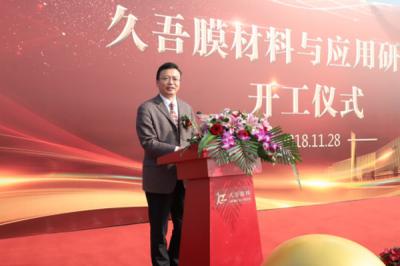As a renewable and environmentally friendly energy source, biodiesel is a necessary supplement to petrochemical diesel. The output of EU biodiesel in 2006 exceeded 6.069 million tons, an increase of 91% over 2005. The EU plans to realize biodiesel consumption accounting for 20% of total diesel consumption by 2020. China is a country with insufficient oil production. In 2005, it imported 26.59 million tons of soybeans, with consumption of 15 kg edible oil per capita, which just reached the world average. At this stage, the development of China's biodiesel industry cannot follow the EU, and the US model-taking a lot of edible oil resources. The better way is to use acidified oil, water retention oil, woody vegetable oil (such as jatropha seed oil), and imported low-priced vegetable oil (such as palm tung oil) for biodiesel processing.
In modern times, the general process for large-scale continuous processing of biodiesel from refined vegetable oils is alkali-catalyzed transesterification of triglycerides and methanol to obtain biodiesel and by-product glycerol. After the transesterification reaction is completed, with centrifugal separation following, the light phase is biodiesel with part of methanol dissolved. After the methanol is recovered by flash evaporation, crude biodiesel needs to go through two processes of acid washing and water washing to remove the residual catalyst, soap, and free glycerin. Pickling generally involves adding an organic acid dilute solution to neutralize the residual alkaline catalyst in crude biodiesel. Washing is to remove residual soap and free glycerin to make the product meet the strict EU biodiesel standards. The washed biodiesel is then flashed after drying, the final product is obtained.
The current biodiesel water washing process that requires one acid wash and one water wash to meet product standards needs two washing centrifuges, and the equipment is expensive. At the same time, two washing processes produce 10%-20% of the product's weight in wastewater, which requires strict biochemical treatment to meet the discharge standards.
The production of biodiesel from palm tung oil has attracted increasing attention, mainly because palm tung oil has a high yield and relatively low price, and can be used to process biodiesel on a large scal. Biodiesel produced from palm tung oil can be used in southern China even in winter without modification.
The ceramic membrane for fermentation has the characteristics of resistance to organic solvents and stable chemical properties. The crude biodiesel prepared from palm oil is directly microfiltered to remove trace amounts of soap and free glycerin to make it meet the EU biodiesel standard. This process needs neither water washing, nor does it produce process wastewater. It can simplify the process and reduce equipment investment.
First add crude biodiesel to the raw material tank, and turn on the circulating pump, then adjust the inlet and outlet valves, so that the ultrafiltration inlet pressure is 0.26 MPa and the outlet pressure is 0.06 MPa. The ceramic membrane filters the crude biodiesel at 60 degrees to collect the filtrate. When the concentration ratio is 4:1, stop the pump.
Soap in biodiesel is in the form of colloids, while free glycerin is dispersed in biodiesel in fine droplets. The hydrophilic end of the soap and the polar substances such as the catalyst are dissolved in a small amount of free glycerin, while the hydrophobic end of the soap is dissolved in the biodiesel. Soap and glycerin form reversed micelles in the biodiesel (fatty acid methyl ester) system. The apparent molecular weight of this micelle is much larger than that of fatty acid methyl esters. When the crude biodiesel is microfiltered with a membrane, soap and glycerin are retained, while fatty acid methyl esters permeate the membrane , which is similar to the existence of surface-active substances such as phospholipids in oils.
Using 0.1um ceramic membrane to filter biodiesel, and when the concentration ratio is 4:1, the membrane flux can be maintained at 300 L/m2.h, and the membrane flux is stable. The contents of K, Na, Ca, Mg metal elements and free glycerin in the microfiltration filtrate have all reached the EU biodiesel standard (EN14214), which has a good industrial application prospect.




 +86-25-58849045
+86-25-58849045
 +86-25-58749295
+86-25-58749295
 jiuwu@jiuwu.com
jiuwu@jiuwu.com
 No. 9 Park Road, Pukou District, Nanjing City (Sanqiao Factory)
No. 9 Park Road, Pukou District, Nanjing City (Sanqiao Factory) Call us on:
Call us on:  Email Us:
Email Us:  No. 9 Park Road, Pukou District, Nanjing City (Sanqiao Factory)
No. 9 Park Road, Pukou District, Nanjing City (Sanqiao Factory)

 English
English 한국어
한국어 français
français русский
русский Español
Español

